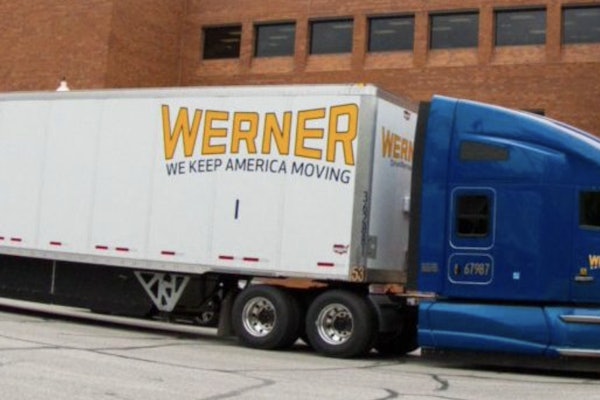The merger and acquisition environment faces new uncertainty as the Trump Administration’s tariff policy brings volatile, external pressure points to transactions already fraught with complexity.
Analysts offer key considerations for parties throughout various stages of deal negotiations to address tariff-related risks.
[RELATED: Specialized firms gain M&A appeal in shifting trade landscape]
Legal strategies to mitigate tariff risk
Preparation is critical for both buyers and sellers.
Eric Heath, managing director at Bluejay Advisors, said sellers should proactively audit and clean up import/export documentation ahead of any sale. Buyers, in turn, should conduct thorough due diligence on logistics records and supplier contracts.
Both sides should use specific contract terms and protections to address who pays if tariffs change, Heath said.
“Sellers want fixed prices, while buyers want protection if new tariffs hurt the business. Special trade programs like foreign trade zones can help reduce costs,” he added.
As trade policies inject uncertainty into earning projections and valuations, Eddie Zukowski, director at PMCF Investment Banking, said the use of structure (such as discounted pricing and earnouts) is a common tool where there is incremental risk to a deal.
“We do expect to see an increase in those mechanisms,” Zukowski said.
Managing Director of Republic Partners Jonathan Britva agreed, adding that there could be more forms of incentive-based payouts to “protect a buyer from the downside risk of the uncertainty with tariffs and performance of companies.”
However, Zukowski emphasized that structured deal terms should only be considered for assets with actual declining performance or outlook, and even then, only on a case-by-case basis.
Conversely, companies that demonstrate the ability to sustain or enhance performance, whether by redirecting capacity to maintain activity levels or improve their pricing through higher shipment complexity or costs, or leveraging strategic advances like near-shoring operations, should avoid structured deals altogether, Zukowski said. These businesses may even justify price increases within their process, too.
Strategic buyers, especially those seeking ways to circumvent tariff constraints, may find these advantages highly attractive, Zukowski added.
Special contract clauses can help, but they need to be specific, Heath said.
Specific clauses like Material Adverse Change (MAC) can be useful if parties clearly define what tariff changes count as major problems, Heath explained, adding that “sellers can be forced to pay for past tariff mistakes through indemnity clauses.”
Insurance products also play a role in protection against certain deal risks with executing a merger and acquisition deal.
Heath said, “While most insurance doesn’t cover tariffs, some new ‘trade war insurance’ policies are becoming available. For predictable costs like steel tariffs, companies can use financial tools to lock in prices in advance.”
Best practices for buyers and sellers on tariff exposure
In periods of macro volatility, Zukowski said buyers should focus more heavily on long-term business fundamentals.
Short-term fluctuations, both good and bad, are likely to be felt, he added.
Sellers benefitting from short-term performance can potentially see an increase in sale proceeds if improvements are marketed. Meanwhile, businesses negatively impacted could see reduced sale outcomes unless they partner with investment banking advisors to form a contingency plan.
When assessing a target’s trade compliance and exposure to tariffs, Heath said missing or inaccurate import/export documentation is a warning sign. Sudden changes or shipping routes without good reason is also a red flag, including past customs fines.
Heath also pointed out that heavy reliance on a single country (especially those subject to high tariffs) is risky.
“Be wary if they classify products in ways that seem designed to avoid higher tariffs,” he said.
From a seller’s perspective, diversification is key in a volatile market, Britva emphasized. This includes having a diversified customer concentration, diversified vendor base and overall diversified network, while maintaining a stable business.
Sellers need to de-risk their position in a volatile market, said Peter Stefanovich, president at Left Lane Associates. Consolidation of two or more companies can also help.
“For example, if you’re a trucking company, having a brokerage arm helps de-risk a buyer’s risk factor of your assets,” Stefanovich explained.
He said a highly risky transaction would be a company with a high customer transaction that’s susceptible to tariff disruptions.
Zukowski noted that the ideal exit point is different for every seller.
“What we do know is tariffs will bring increased complexity as buyers scrutinize sustainability and long-term outlook,” he said.
Before any deal, companies should conduct a review of their own tariff exposure, as well as being upfront about risks to the other party, Heath said.
Scarcity premium, wherein a company is valued higher than its market value due to limited availability, can also come into play, Zukowski added. A shrinking pool of high-performing sellers who delay or pause their sale processes and leave fewer desirable opportunities in the market could drive premium pricing.
The bottom line, Heath said, is companies that understand their tariff risks are better positioned to secure favorable deals.














